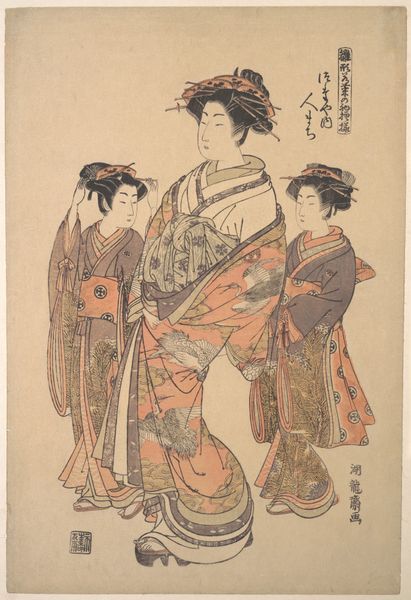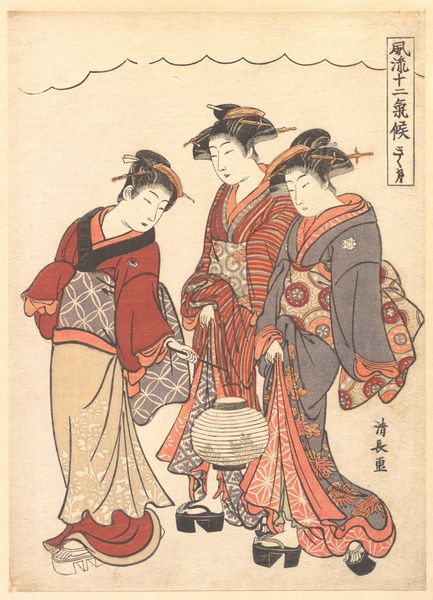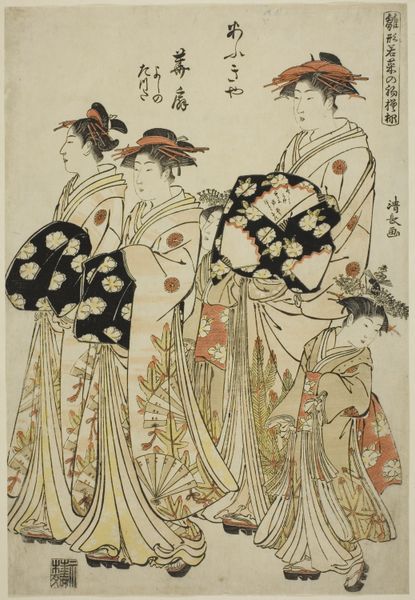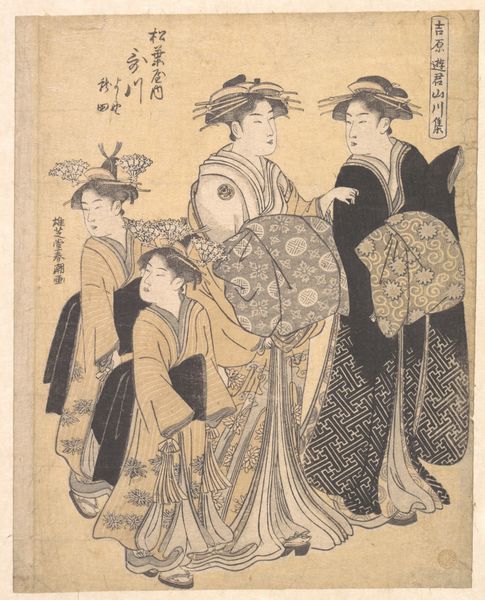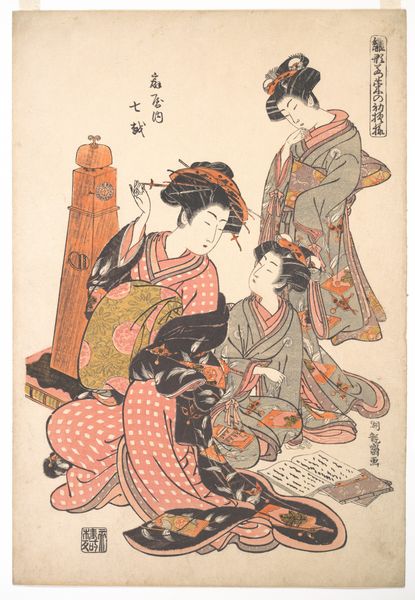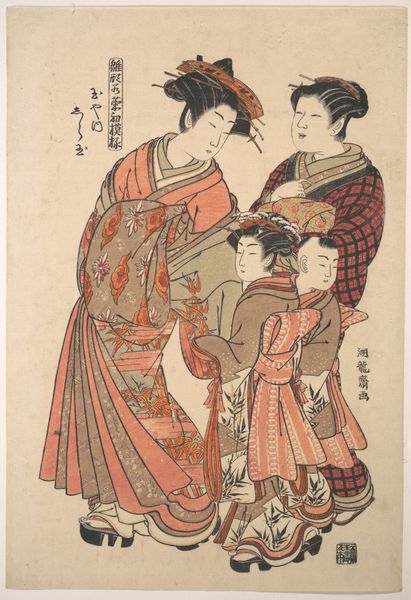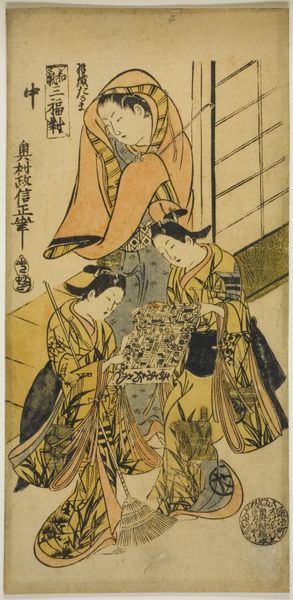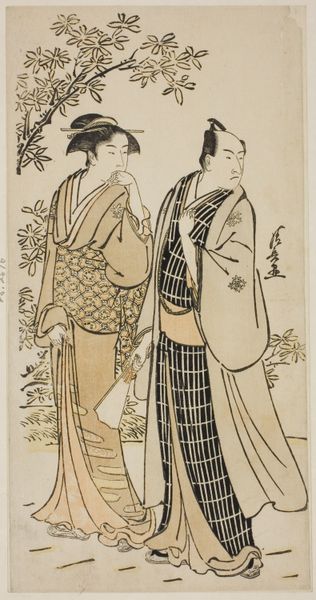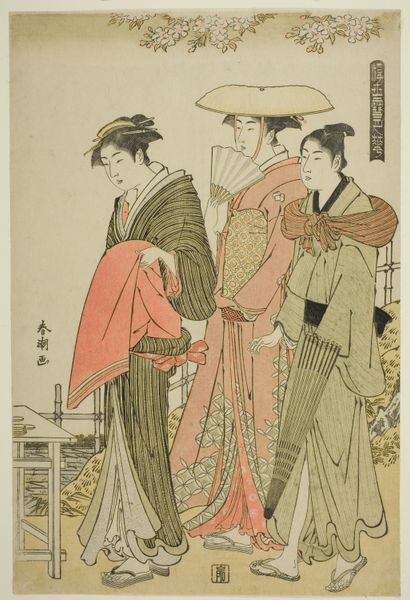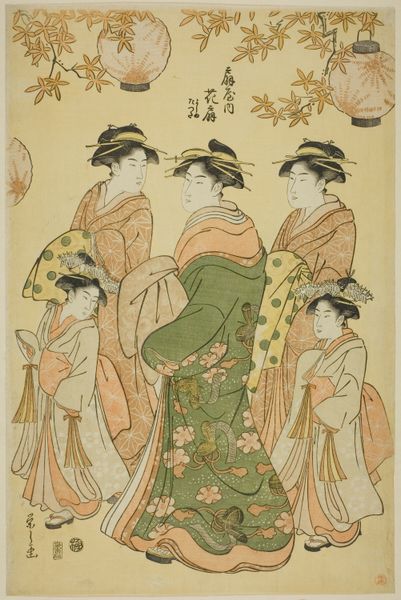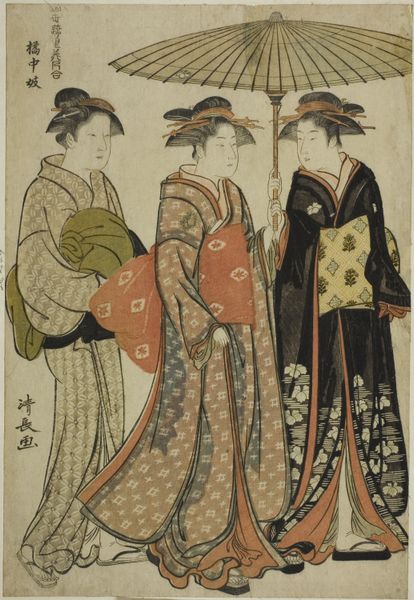
The Courtesan Sugatami of the Tsuruya Brothel, from the series “A Pat-tern Book of the Year’s First Designs, Fresh as Spring Herbs” (“Hinagata wakana no hatsu moyō”) 1777 - 1778
0:00
0:00
print, ink, woodblock-print
#
ink drawing
# print
#
asian-art
#
ukiyo-e
#
japan
#
figuration
#
ink
#
woodblock-print
Dimensions: 15 7/32 x 10 1/8 in. (38.7 x 25.7 cm)
Copyright: Public Domain
Editor: This woodblock print, created around 1777 by Isoda Koryūsai, is called "The Courtesan Sugatami of the Tsuruya Brothel." I find it so captivating, especially the intricate detail in the courtesan's kimono. What stands out to you when you look at this piece? Curator: I’m immediately drawn to the production process. The meticulous carving of the woodblocks and the application of ink tell a story of labor and skill. Consider the different blocks required to render the varied textures of fabric, and how each impression contributes to the final image's cultural value as both art object and commodity within the Ukiyo-e tradition. It's not just about aesthetic beauty. It’s about the materiality, labor, and economics involved. Editor: So you're thinking about it more in terms of how it was made and what that represents? Curator: Exactly! Think about the pigments used, for example. Where did they come from? How were they sourced and traded? The courtesan here is not just a figure; she embodies the result of complex economic systems of the time. These are tangible goods presented as the foundation of the art presented, and by extension her representation. Editor: I hadn't really considered that side of it before. That's really interesting - seeing how the materials themselves tie into trade. I suppose each material could suggest another social factor. Curator: Precisely! And where do such images circulate? Does its access dictate taste in the city? Or does the style of pattern and decoration reinforce taste and wealth. I’d wonder what our current social factors affect our production of art as well. What have we learned? Editor: I think I now have a deeper understanding of how much materiality informs not only the production of the piece but its social significance. Thank you!
Comments
No comments
Be the first to comment and join the conversation on the ultimate creative platform.
